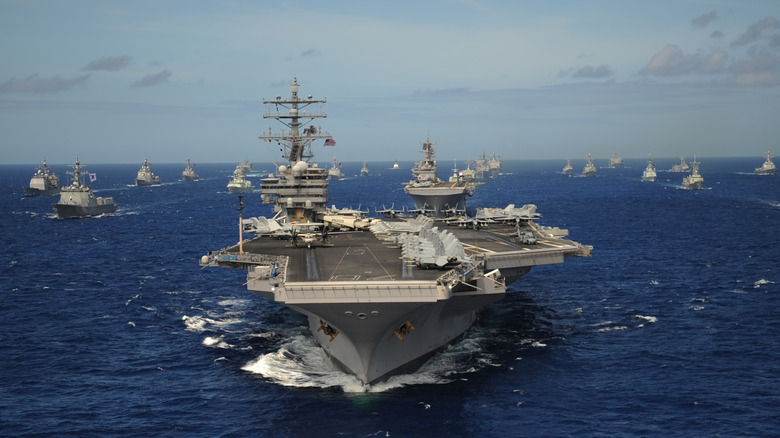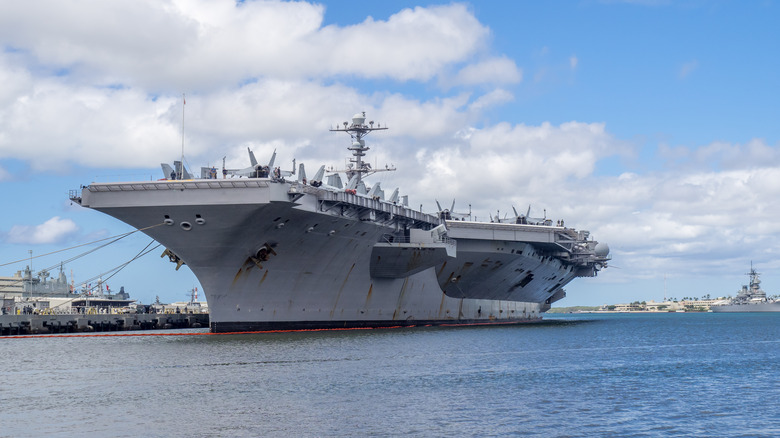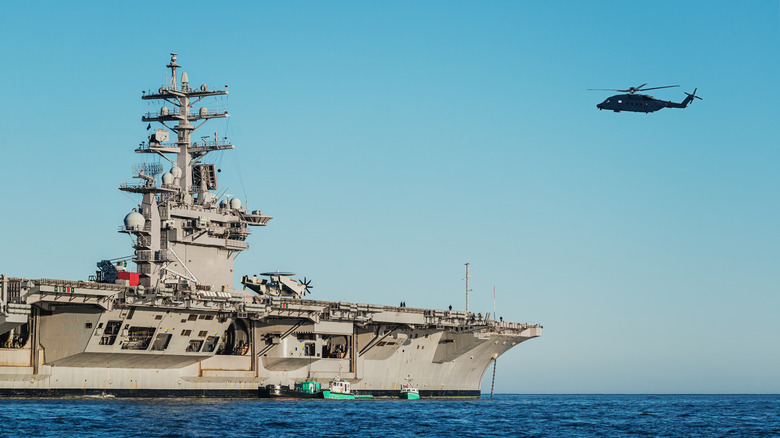
When you think of a city, you might imagine nonstop activity, with thousands of people working around the clock and following their daily schedule. Now picture all of that, but on one of the world's biggest aircraft carriers floating in the middle of the ocean. The life aboard a U.S. Navy Nimitz-class aircraft carrier is kind of similar to that. Each of these giant military vessels supports a crew of 5,680 people, split between the ship's company and the air wing. When you think about it, it's no less
than a self-contained city with its own power, water, food services, and even barbers, dentists, and doctors on board.
Interestingly, the carrier is giant enough to house such a huge crew without feeling congested. The Nimitz-class carriers can weigh up to 114,000 tons and stretch over 1,092 feet in length. Their flight decks are longer than three football fields and are built to handle up to 150 flight operations a day. From launching fighter jets every 20 seconds to coordinating complex defense systems, these carriers never stop working — at least not until their next refueling. (You won't believe how long it takes to refuel an aircraft carrier.)
Read more: 10 Of The Largest Navies In The World, Ranked By Self-Reported Total Naval Assets
Aircraft Carriers Transport Lots Of Supplies In Addition To The Crew

Out of the 5,680 personnel on board, about 3,200 are part of the ship's company, managing everything from navigation to nuclear power. The other 2,480 belong to the air wing, responsible for flying and maintaining more than 80 aircraft, including Super Hornets, Growlers, Hawkeyes, and even the MH-60 Seahawk military chopper. These aircraft cover a wide range of missions, from air combat and surveillance to electronic warfare and search-and-rescue operations.
Each Nimitz-class ship carries defensive weapons like Sea Sparrow missiles, rolling airframe missiles, and Phalanx CIWS guns to handle incoming threats. The advanced radar systems like the SPS-48E and SPS-49(V)5 scan the skies around the clock, while submarine-detection radars and countermeasures like chaff, flares, and decoys protect against unseen underwater threats. Basically, running a carrier is like running a well-oiled machine, and the entire ship operates with precise timing, often taking up to 90 days just to get the crew ready for deployment.
Aircraft Carriers Require Constant Attention To Stay Operational

Operating such a behemoth doesn't come cheap. The annual maintenance for one Nimitz-class carrier exceeds $1 billion, and aircraft upkeep adds nearly the same amount. These floating cities require nonstop attention to everything from their nuclear reactors deep below deck to their high-tech systems coordinating aircraft launches above. Still, these costs are considered necessary for keeping the U.S. Navy strong and ready for threats.
These carriers often serve as the lead in strike groups, ready to respond to global crises, disasters, or conflicts at a moment's notice. The Nimitz-class is gradually being replaced by the newer Ford-class carriers, which are more automated and need fewer crew members -- around 4,660. Crews on America-class amphibious assault ships, on the other hand, number over 2,700, while Wasp-class ships host up to 2,979 personnel. In contrast, smaller ships like the Cyclone-class patrol craft need only 30 sailors to run, showing just how massive the Nimitz-class truly is by comparison.
Want the latest in tech and auto trends? Subscribe to our free newsletter for the latest headlines, expert guides, and how-to tips, one email at a time.
Read the original article on SlashGear.











